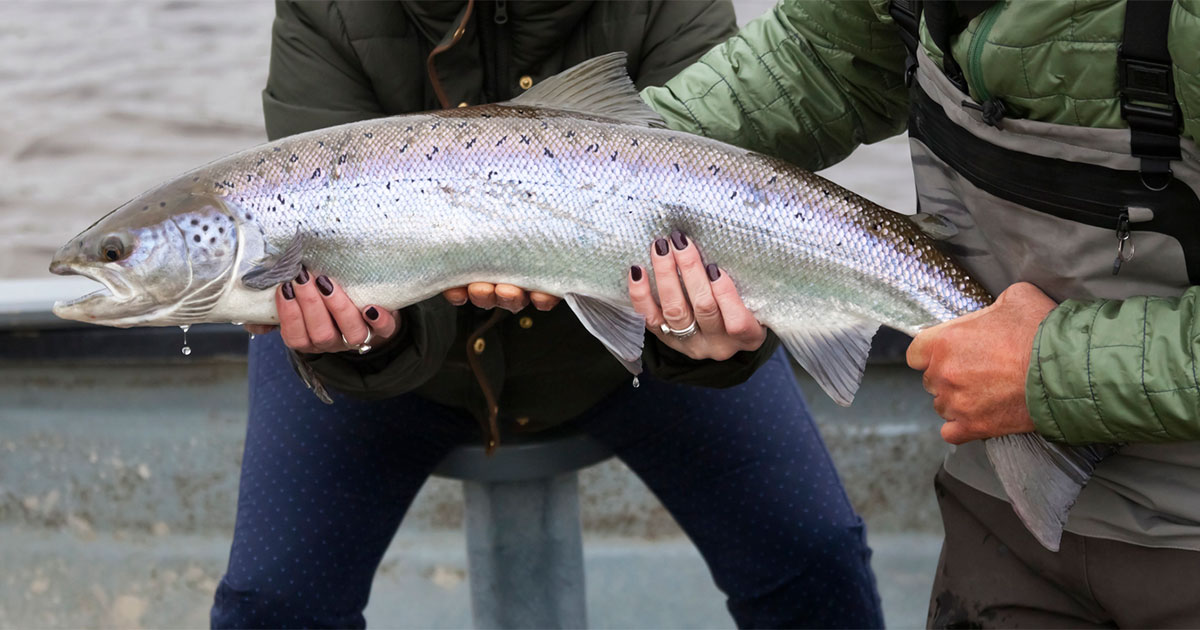Preliminary data for September 2023 indicates that survival was above 96.5 percent, up on the 95.3 percent recorded in September 2022.
The improvement comes after several mitigation measures were adopted by farmers to further boost animal welfare amid the climate change challenge, including oxygenation of the water, less time spent in the sea, improved monitoring, and new feeding strategies.
Fish farmers who care for their livestock in remote, weather-beaten parts of Scotland said any loss of life is “utterly devastating,” just as it is for any animal farmers, but the sector’s increased knowledge of natural environmental challenges has helped them to provide even better care this year.
Last year Salmon Scotland warned of a significant increase in microscopic jellyfish blooms which had affected the survival of farm-raised fish.
But while the tiny translucent jellyfish measuring as small as 2 mm continue to pose challenges for farmers who care for their livestock all-year round, millions of salmon have been moved out of harm’s way in 2023 thanks to improved monitoring and the variety of mitigation measures.
September survival rates typically drop to their lowest monthly level because this is when seawater temperatures peak—and this year has seen record temperatures, partly due to the El Niño weather warming phenomenon.
The higher seawater temperatures seen in Scotland are not an issue for salmon, as they are within their natural range. Fish are cold-blooded and seawater temperature increases can encourage growth and allow harvest weight to be reached more quickly.
However, record seawater temperatures do contribute to an increase in naturally occurring organisms which can reduce oxygen levels and also compromise the health of the salmon in areas such as the west coast of Scotland.
Jellyfish and algal blooms have been exacerbated this year as a result higher than average temperatures, similar to the changing weather conditions we have all experienced this year. But these are not expected to last and seawater temperatures are expected to return to average in 2024.
The aquaculture sector is constantly innovating to overcome challenges and the sector has been investigating and deploying a range of short, medium, and long-term solutions to maximize survival.
Mitigation measures include:
- Aeration/oxygenation of the water.
- Feeding strategies which minimize the time salmon spend near the water surface where they are more likely to come into contact with jellyfish / algal blooms.
- Bubble curtains, which use air to create a barrier which prevents jellyfish and algal blooms from entering salmon pens.
- Fish movement to remove salmon when the presence of micro-jellyfish is anticipated or detected.
- Putting larger fish to sea which reduces the amount of time salmon spend in sea water to just one summer, which helps avoid contact with organisms that could be harmful.
- Offshore and semi-closed containment for the marine phase could help to separate salmon from naturally occurring organisms.
- Broodstock development to breed more climate-resilient salmon.
Dr. Iain Berrill, head of technical at Salmon Scotland, said:
“September is usually one of the most challenging months for survival, but interim figures suggest that monthly survival in September is expected to be above 96.5 percent, compared to 95.3 percent in the same month last year.
“There is no question that 2023 has been a challenging year, but the ongoing hard work by our farmers has provided good conditions for their salmon, despite record-breaking seawater temperatures here in the UK and globally.
“However, while there is always a level of fallen stock in any farming operation, the numbers this year are not where any farmer would want them to be. It is utterly devastating to the farmers caring for those animals when any fish are lost.
“Our ability to address the environmental challenges facing our fish while they spend up to two years in the sea has improved, but there is always more we can do to further improve survival.
“But the sector is resilient in the face of climate change and we have a track record of being pro-active and constantly adapting to environmental challenges.
“Like all food-producing sectors, we must adapt to climate change and the aquaculture sector will continue to lead the world in healthy, sustainable salmon for decades to come.”



